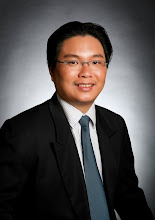The following question is used to illustrate the Model Approach and Unit Transfer Method.
You will realise that the fundamental concept between UTM and MD is the same. While MD uses bar diagram and visual spatialisation, UTM uses tabulation and logical reasoning.
Question
5/6 of the buses were owned by Company C and the rest by Company S. Company S bought another 900 buses and now owns 2/3 of all the buses. How many buses does Company S have now?
Answer:

Try to solve the following using UTM:
Tom had a box of red beads and yellow beads. When he added in 30 red beads, 20% of the beads were yellow beads. He added another 100 yellow beads; as a result, 60% of the beads in the box were yellow. How many red beads were there in the box at first?


11 comments:
Hi Sunny
Is the answer 50 red beads?
wo wen tian
Hi,
The answer is 50.
Hi Sunny,
I tried to solve this using algebraic equation,got really complicated! Can illustrate how to solve using UTM?
How can I buy the book?
Alan
Hi Sunny,
Can all PSLE questions be solve by UTM? What are its limitation? The fundamental concept of model is actually algebra, is UTM also build on the basis algebra?
hi mr tan,
i am your stud. frm the sunday class frm 5.00 to 6.00... i dunno how to do these questions...
1)mr ng wrote 5/8 of the book in 10 fays. he took anoher 4 days to write 2/3 of the remaining book. he still had 24 more pages to write. on the average, how many pages of the book had he writen that day?
and...
2) A restaurant had 51a black chairs and white chairs. The ratio of occupied white chairs to the number of unoccupied white chairs is 2:1. If 23a black chairs were occupied, there were just as many unoccupied black chairs as white chairs , how many white chairs were there?
.., wondering whether yhis is the unit transfer mathod... do tell me if it is not
thx...
sunday class 5.00-6.30 student,
clarissa tan
Clarissa,
Question No 1 will be easier if you use model.
Question No 2 can be solved by unit Transfer Method.
Pass me these two questions after the class, I will explain to you how to solve them.
Sunny
thx(:
kk cyar
clarissa
21a white chairs
14a occupied & 7a unoccupied
Hi Sunny,
Why is UTM preferred to Model Approach?
In my opinion, it is "inappropriate" to say that UTM is preferred to Model Approach. We have to understand that different children have different "inclination" and problem solving styles. While some children are gifted in their spatial visualisation, we cannot deny that many are not. Being a reason why they have difficulties in using the model approach. Thus UTM is one of the alternatives, other than the model drawing approach. It is important to teach pupils different problem solving methods. Pupils should be encouraged to try different approaches and have the flexibility or option to choose the method that works best for them in solving the problems.
Mr Tan,
I have a question that I can't answer. How do you know that a sum is needed to be solved by UTM?
I mean, can't UTM be replaced by algebra and sometimes by models? I don't understand. Please explain. Thanks.
Post a Comment